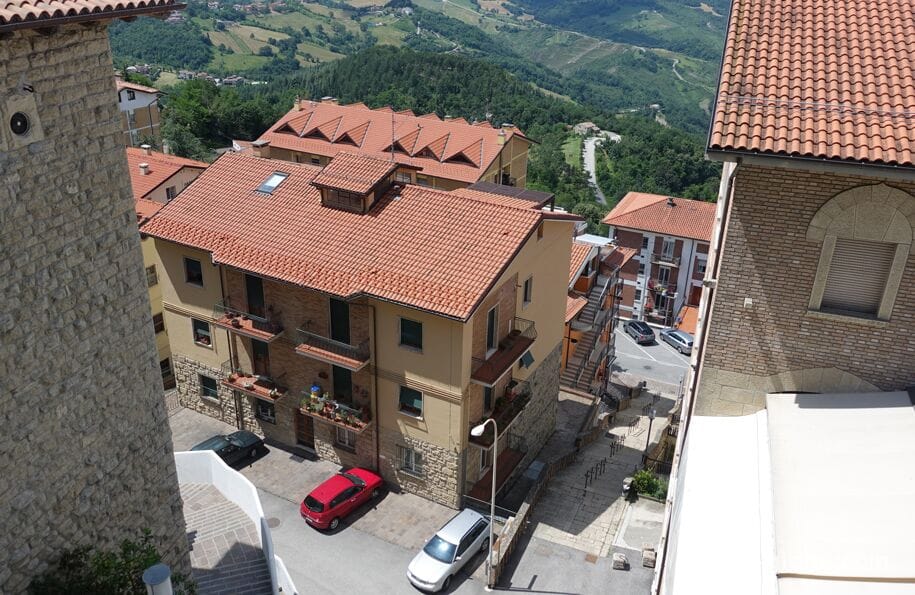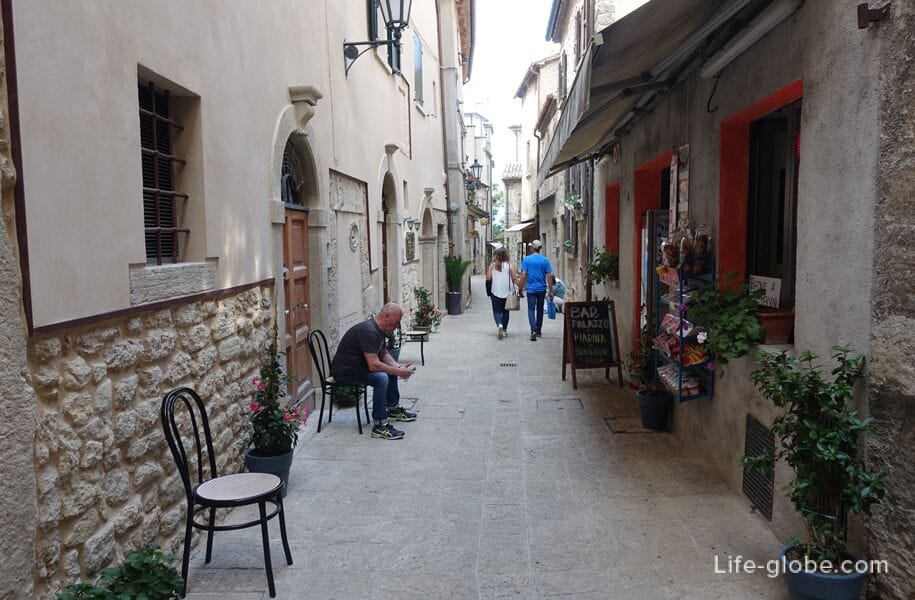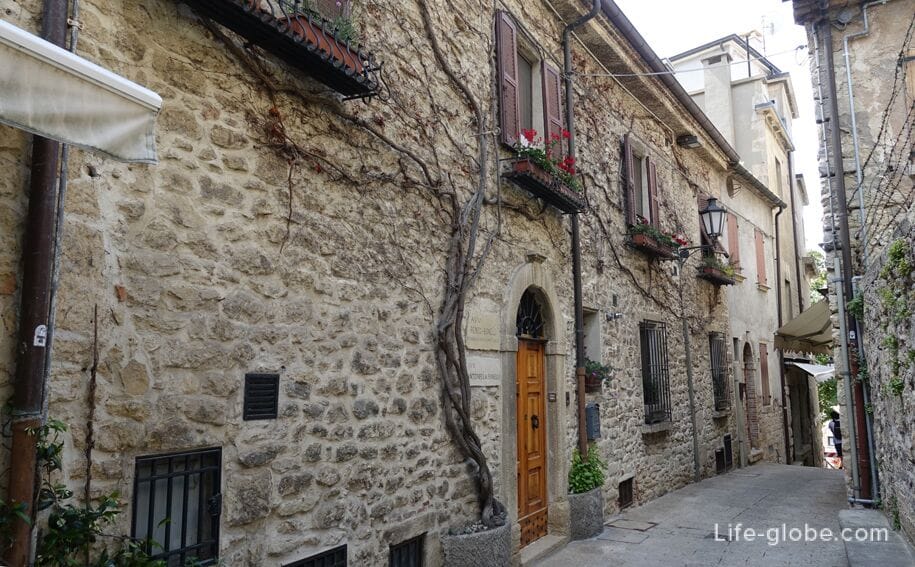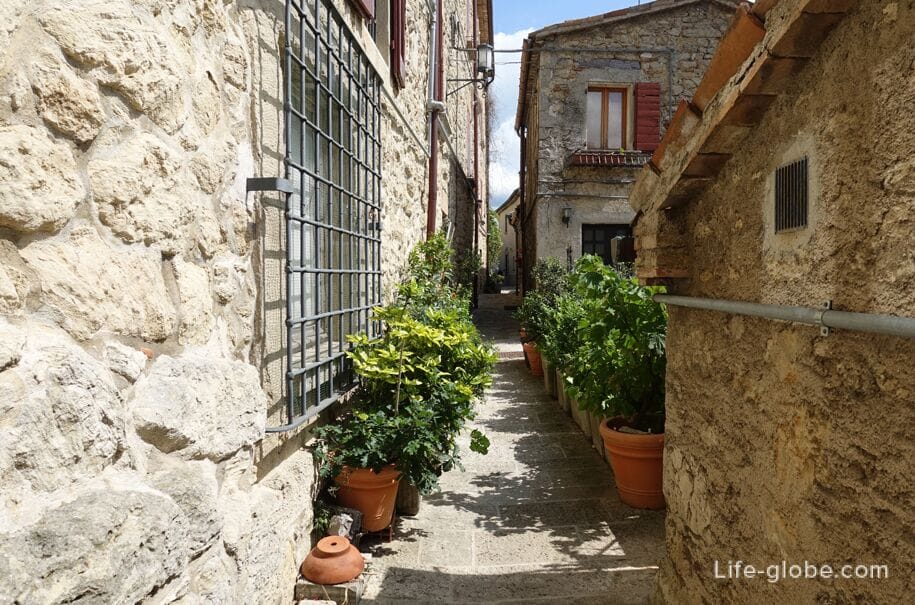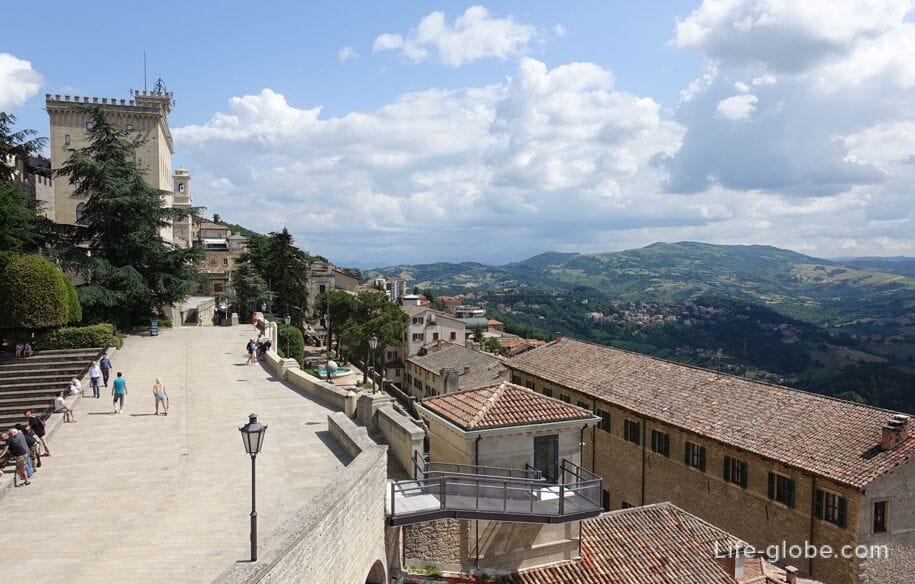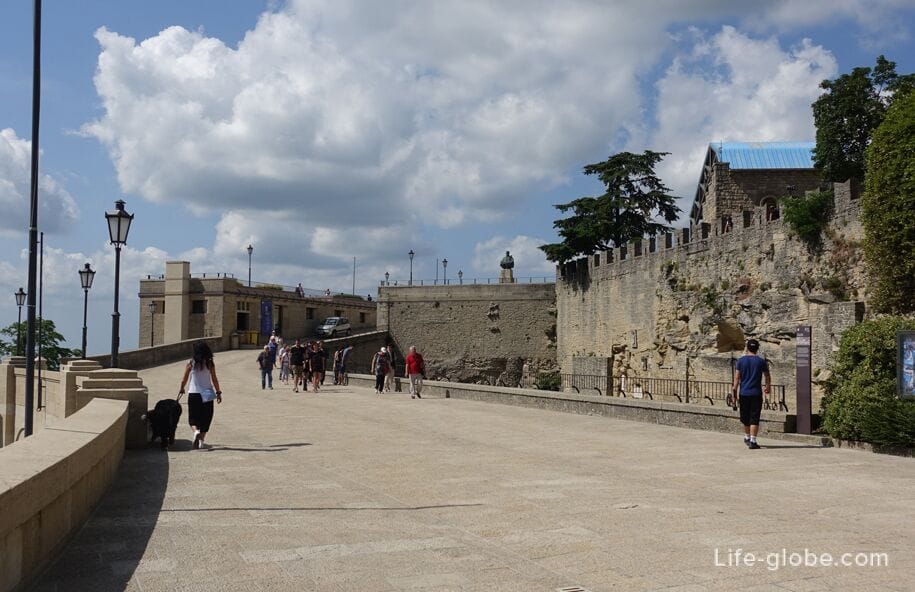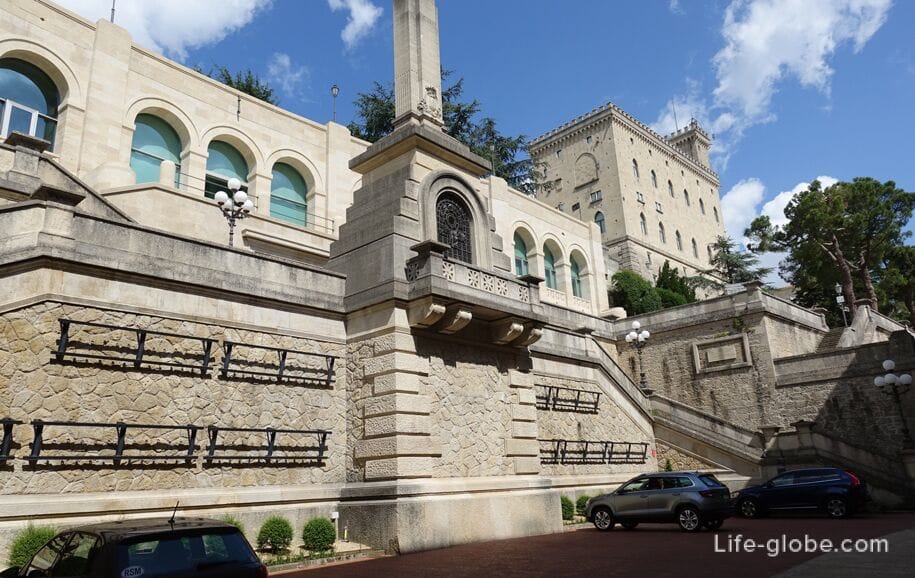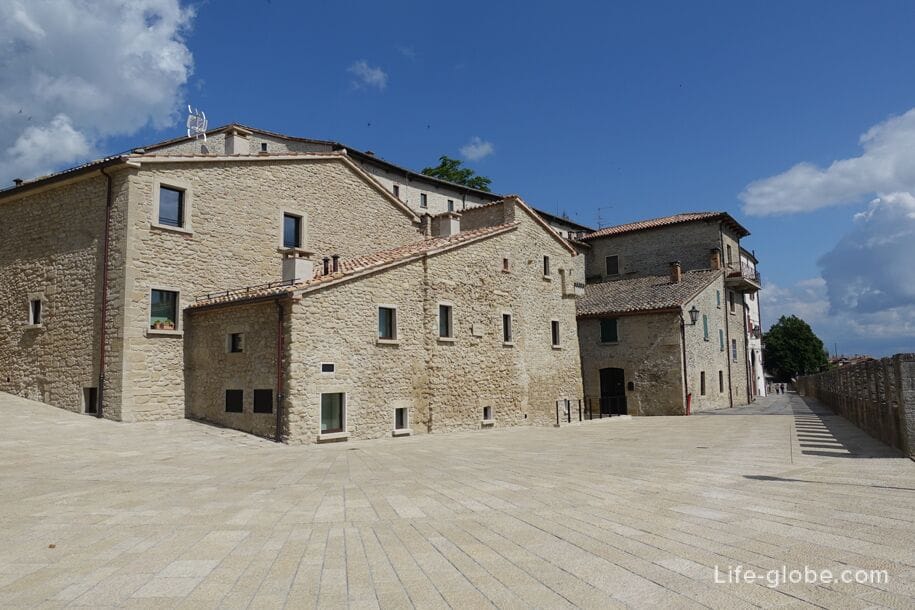San Marino is one of the smallest and oldest states in the world.
Official name: Republic of San Marino; Italian name - Serenissima Repubblica di San Marino, which literally means the Most Serene Republic of San Marino.
The republic is located in the southern part of Europe and is surrounded by Italy on all sides. The nearest major Italian city to San Marino is Rimini. San Marino has no access to the sea.
The capital of the republic is the eponymous city of San Marino (Citta di San Marino), which will be discussed in this article, since it is the city of San Marino that is the main core, as well as the historical and tourist center of the country.
The city was founded in 301 by the mason Marin (Saint Mirin), who gathered a community of freemasons in the cave of Monte Titano and thereby founded a new city, which received its name in honor of Marin.
San Marino is the third largest city in the country.
The city is located on Mount Titano (Monte Titano / Monte Titano).
The historical center of the city is included in the UNESCO World Heritage List.
Today, the historical center of San Marino is rich in sights. It includes winding narrow streets and small squares, along which there are churches, ancient buildings, three famous medieval towers, as well as museums, shops, cafes, restaurants and accommodation facilities (hotels)

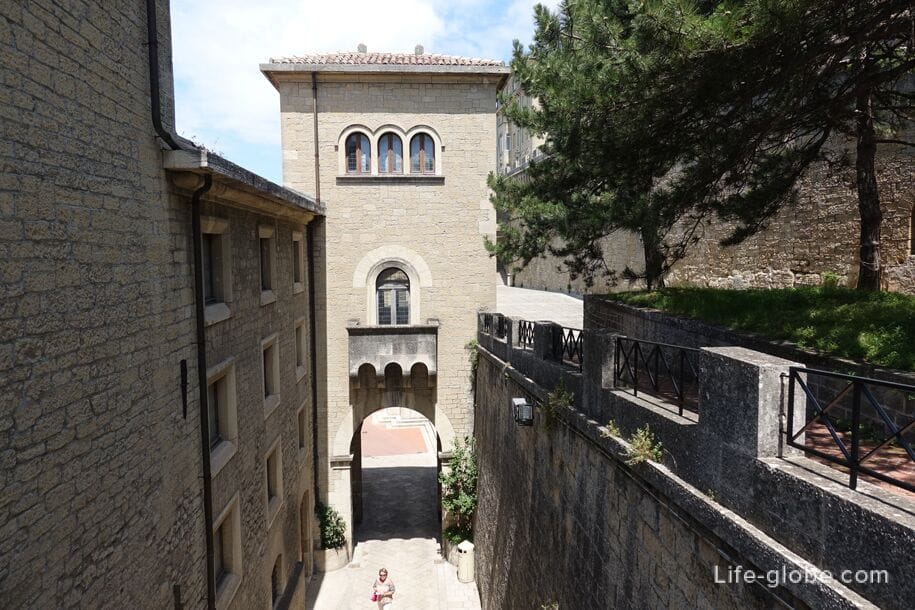

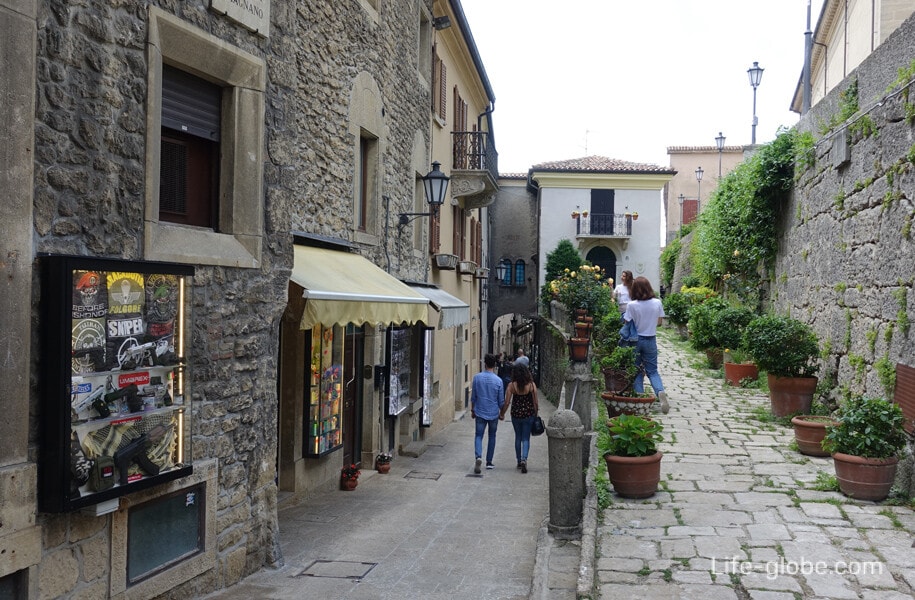
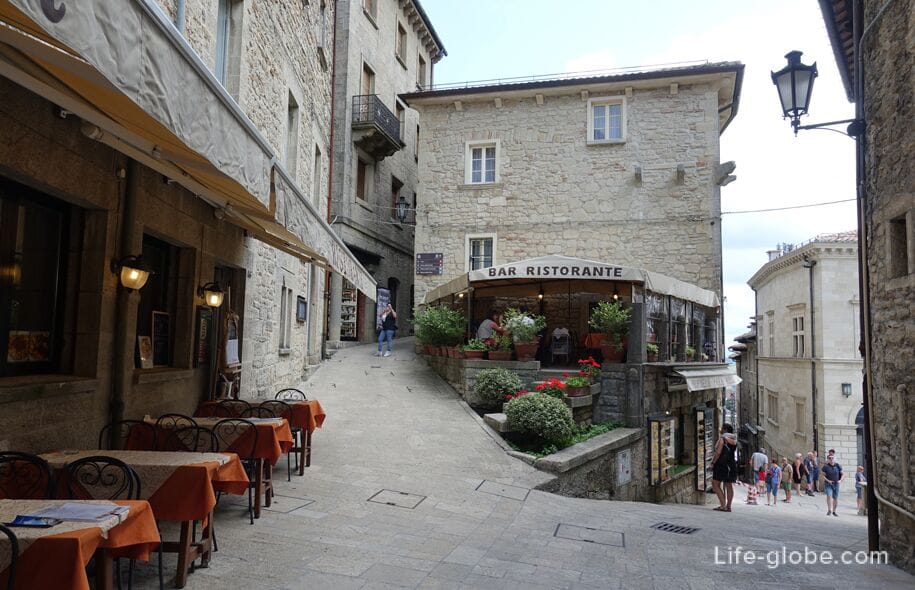
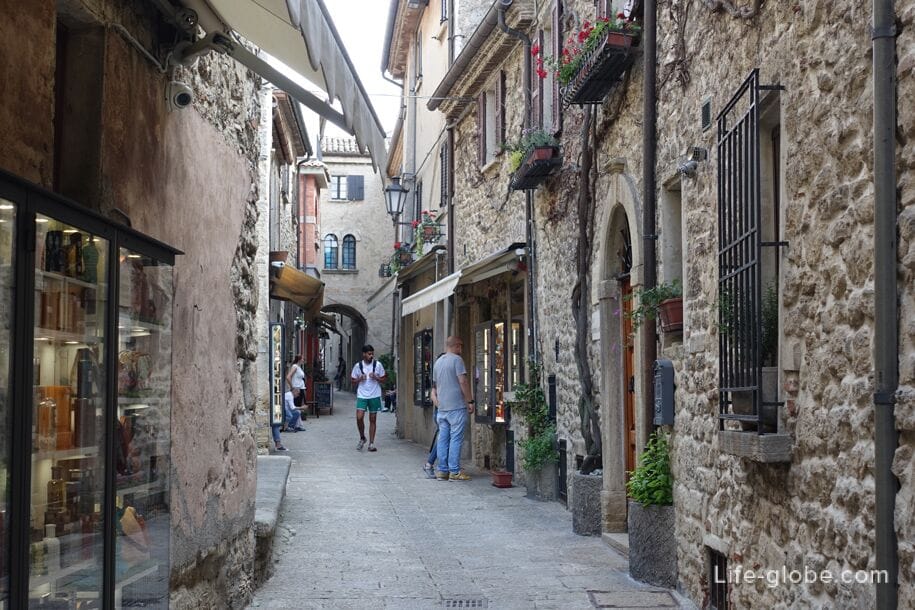

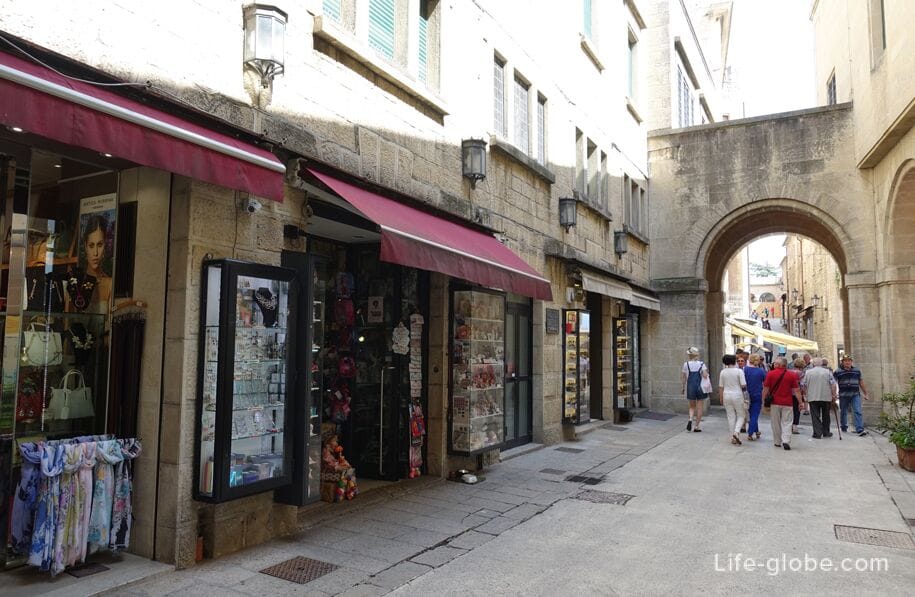
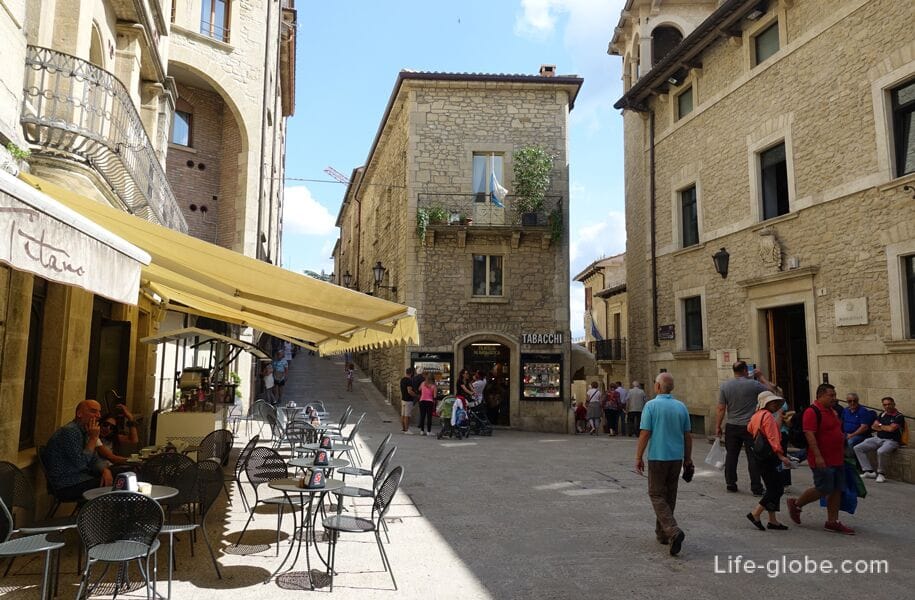
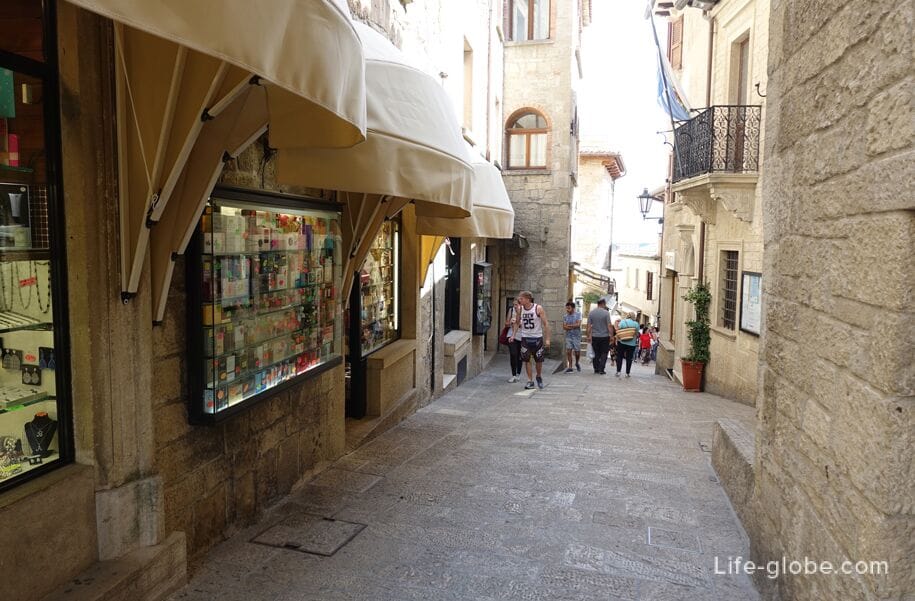
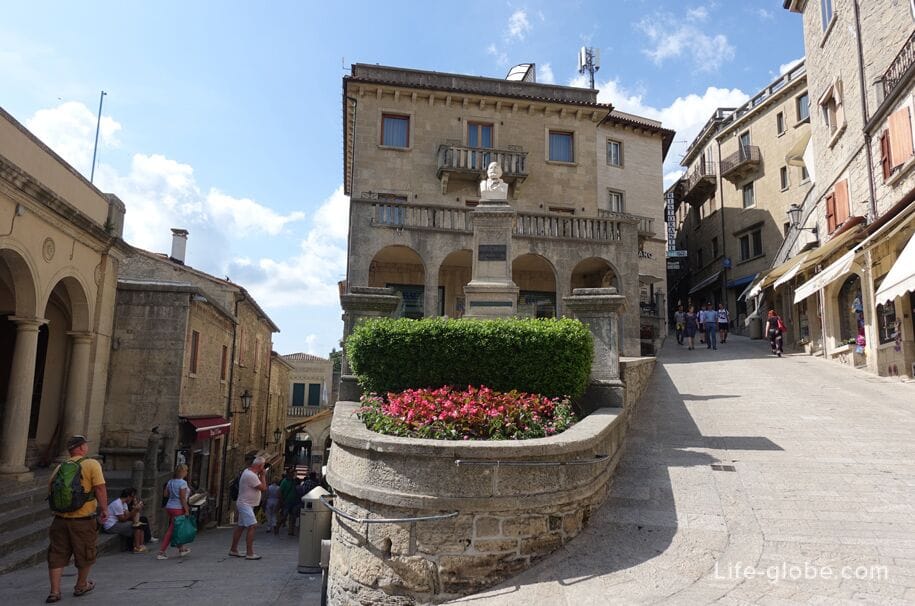
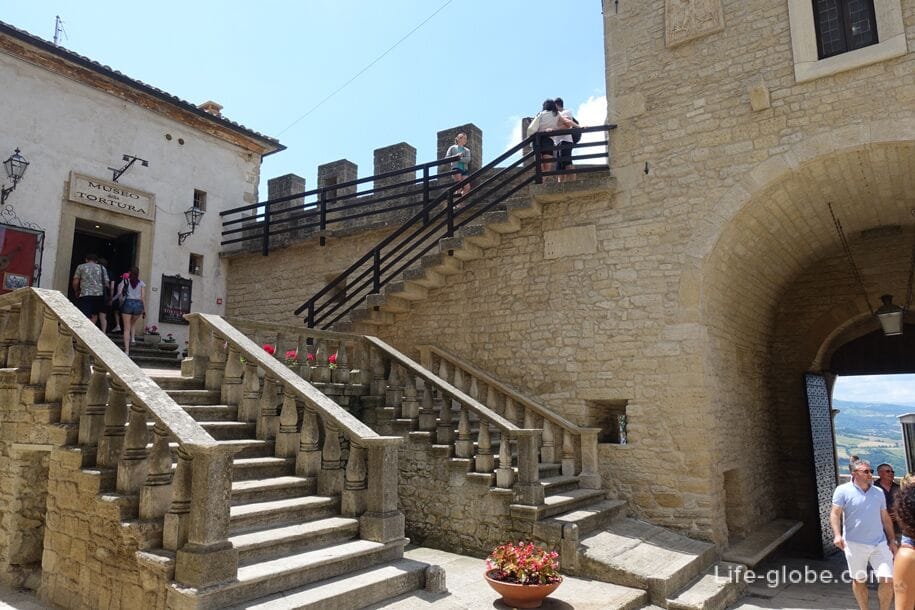
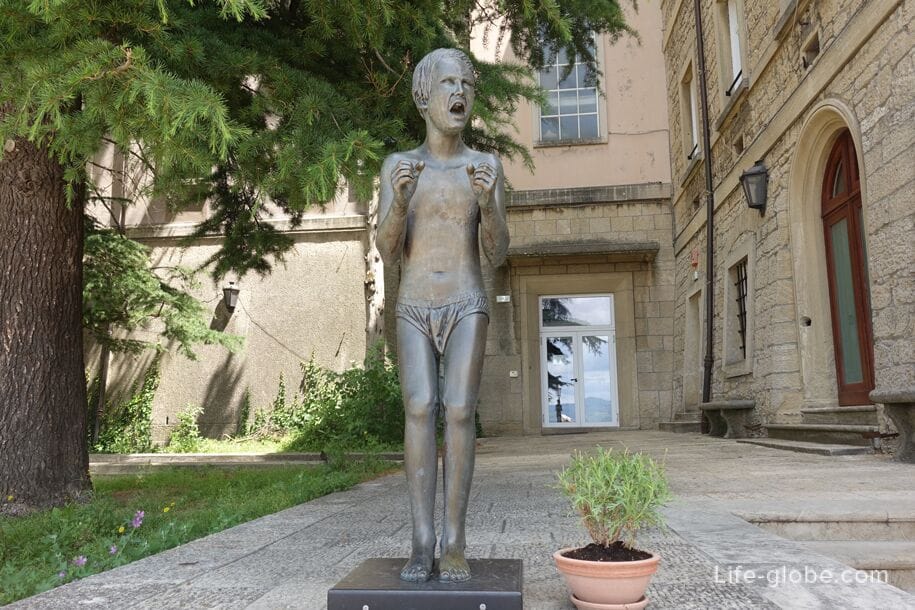
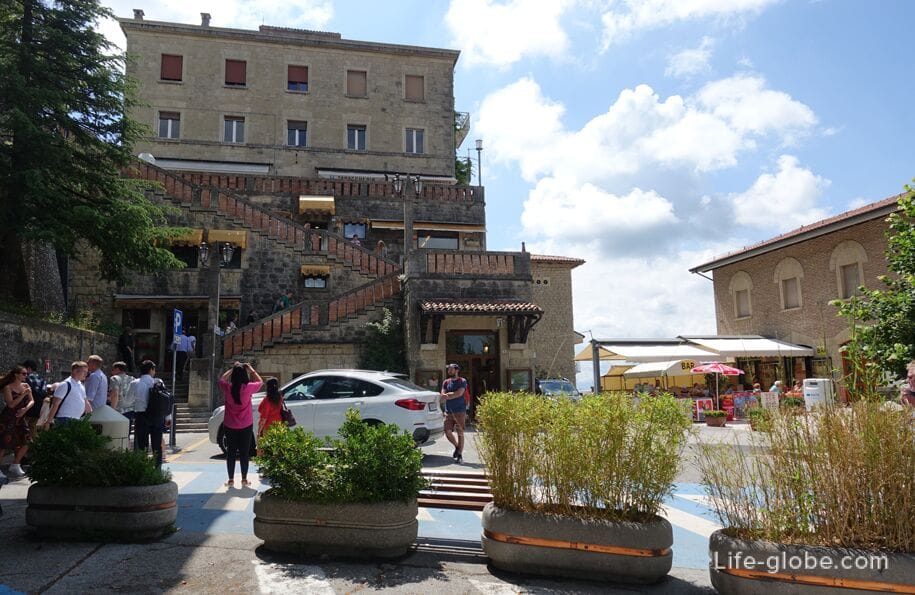
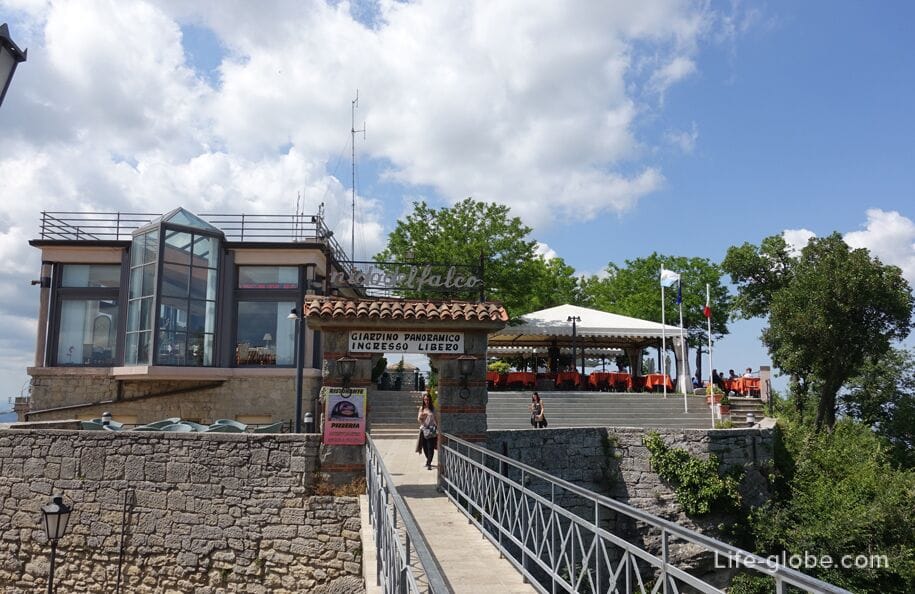
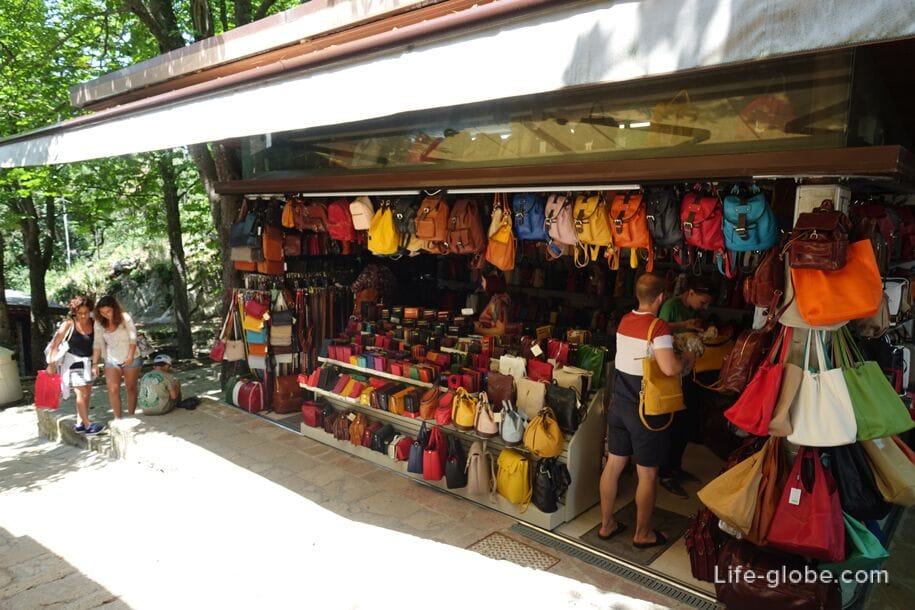
San Marino also attracts the attention of guests with beautiful panoramic views of the country itself and Italy, which open from many points of the historical center.
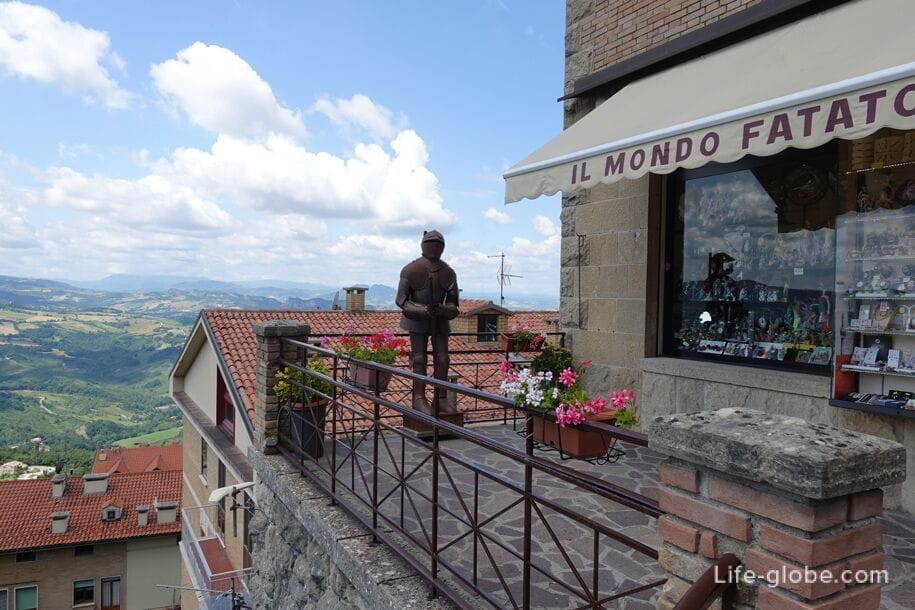

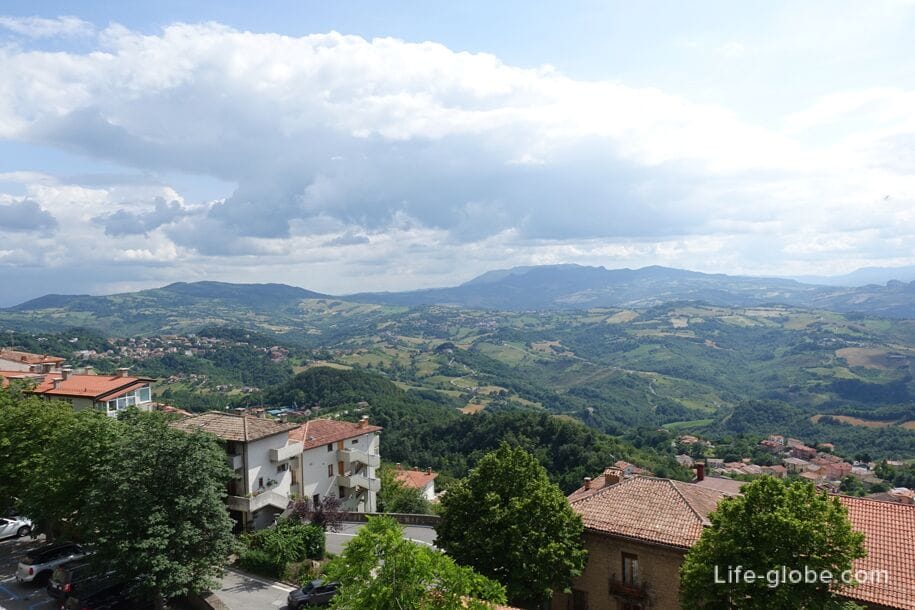
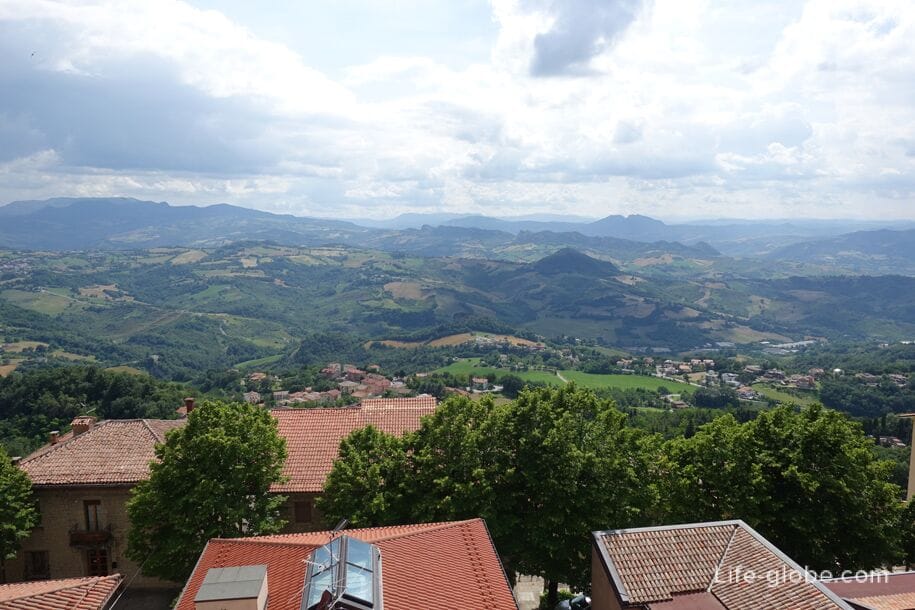
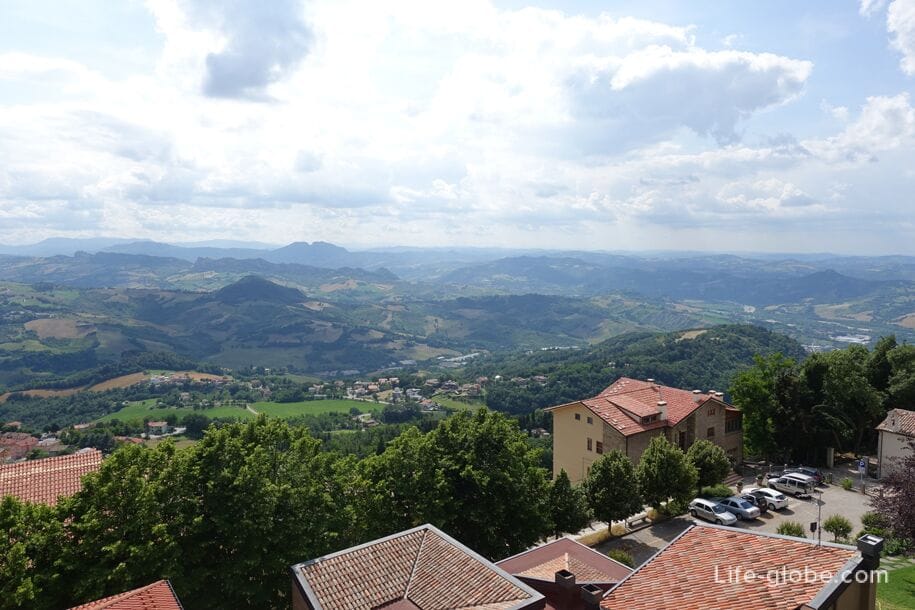
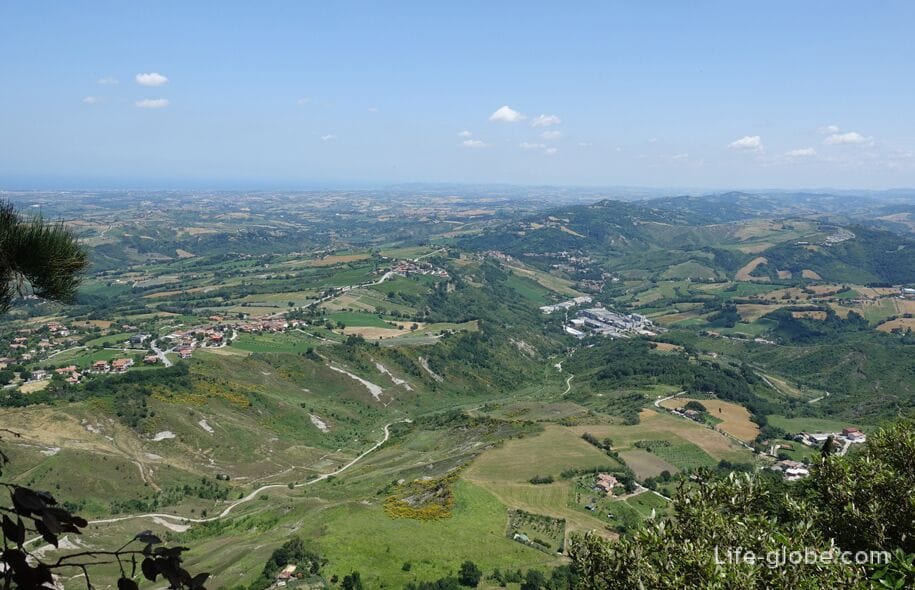


Most of the historical center of San Marino is surrounded by an old fortress wall, through which a gate leads to the territory.

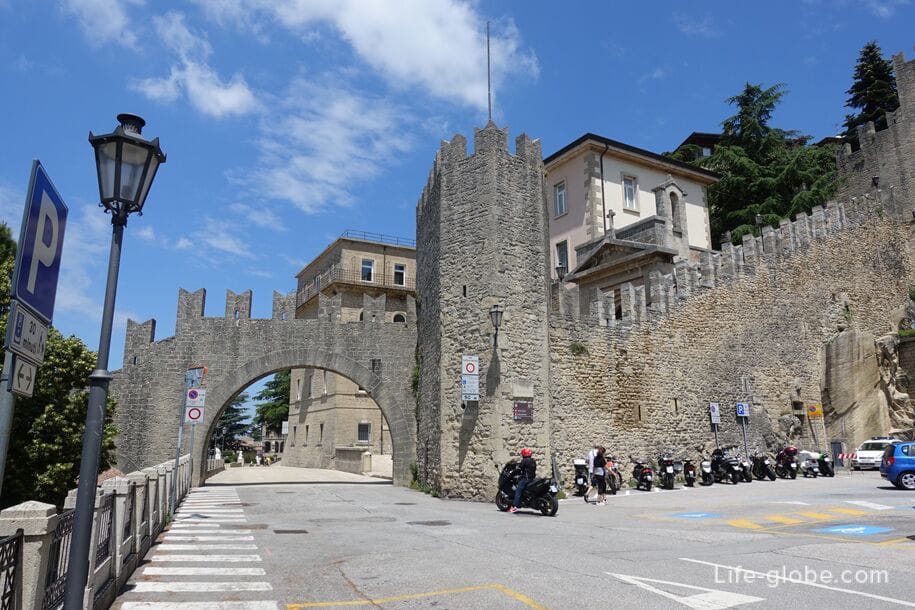
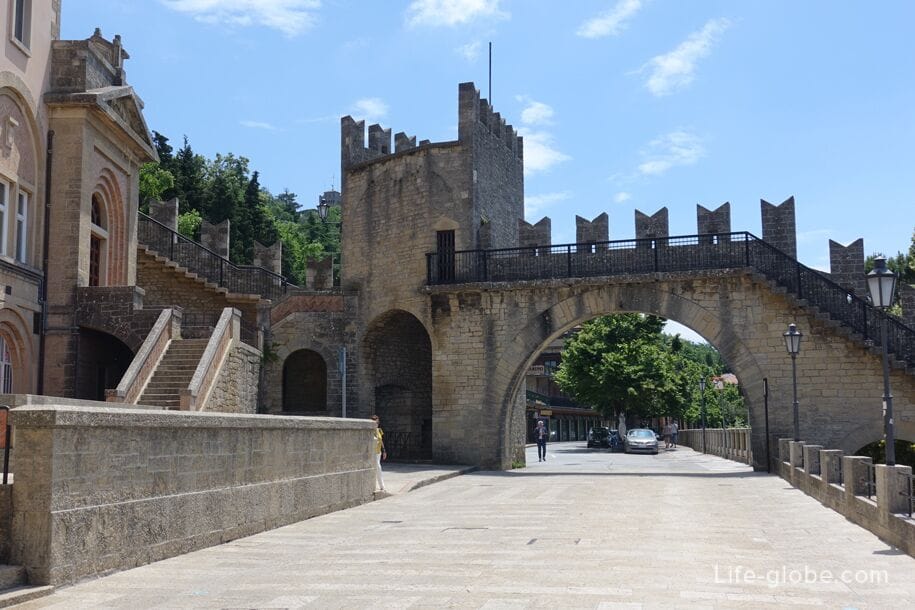

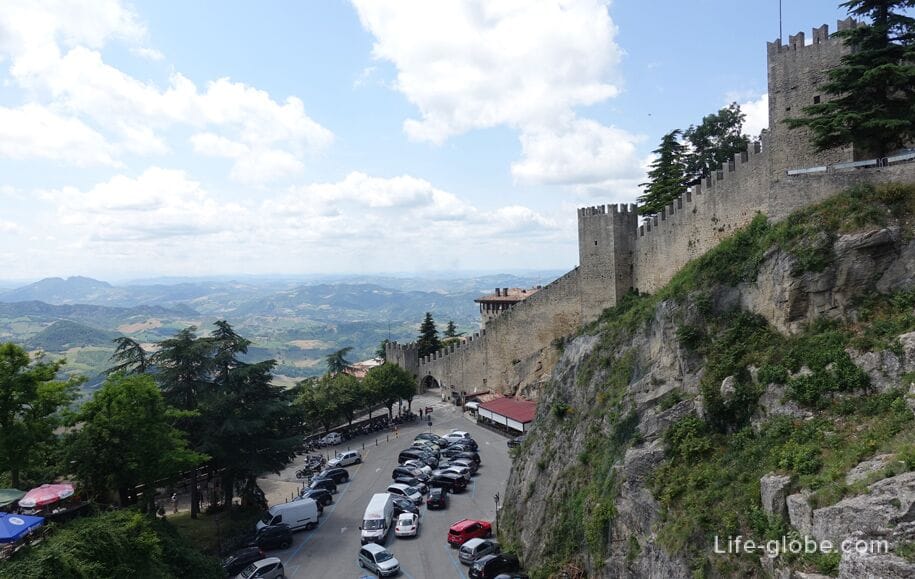
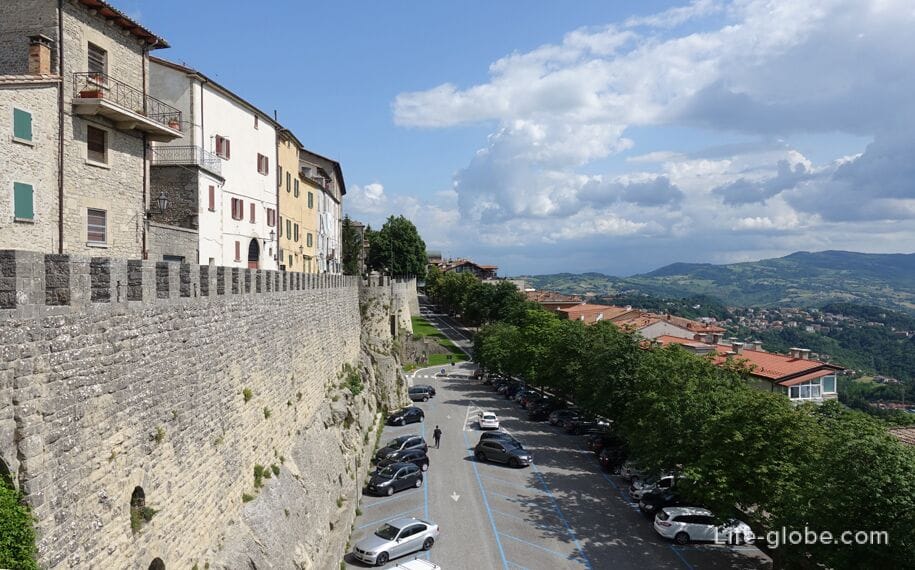
The most iconic gate is the Gate of St. Francis (San Francesco / Porta San Francesco), which was and is the main entrance to the old center of San Marino and dates back to 1361.

Main sights and museums of San Marino
Three towers of San Marino (Guaita, Chesta and Montale)
The Three Towers of San Marino (Torri di San Marino) are a group of medieval towers that once performed defensive functions to protect against enemy attacks, located on the three highest points of San Marino - the three peaks of Mount Titano.
The complex of three towers includes: the Guaita or Rocca Tower (Guaita, La Rocca, Prima Torre), the Chesta or Fratta Tower (La Cesta, Fratta, Seconda Torre) and the Montale or Torza Tower (Montale, Terza Torre).
The towers were erected as fortresses and were first documented in 1253.
There are paths between the towers, including a stone road connecting three monumental centuries-old structures.
From the territory of the towers, as well as the surrounding area, stunning panoramic views of San Marino and the surroundings of Italy open up.
Two towers, for a fee, Guaita and Chesta, can currently be entered (they are museums), while the third tower, Montale, is closed to visitors.
Entrances are paid. Learn more about the three towers of San Marino...
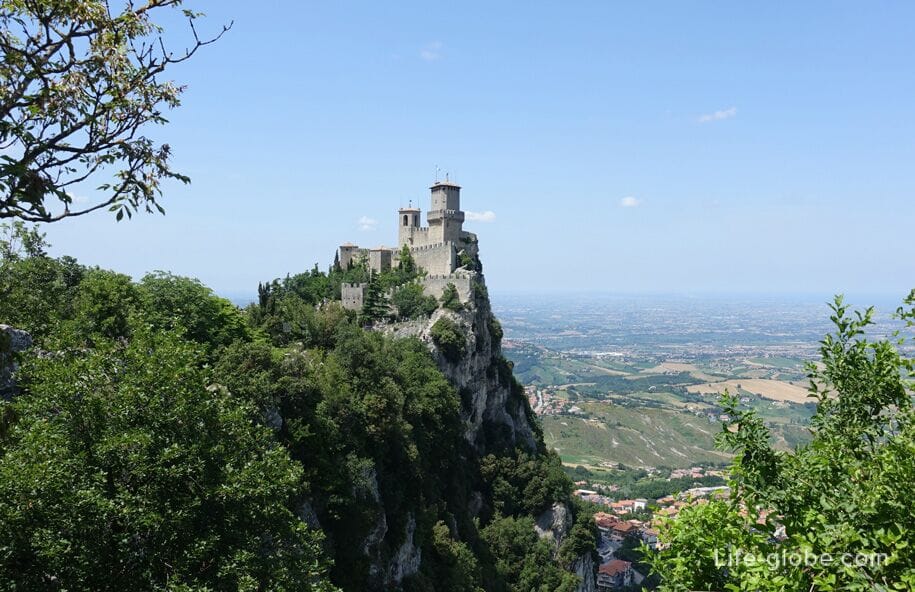
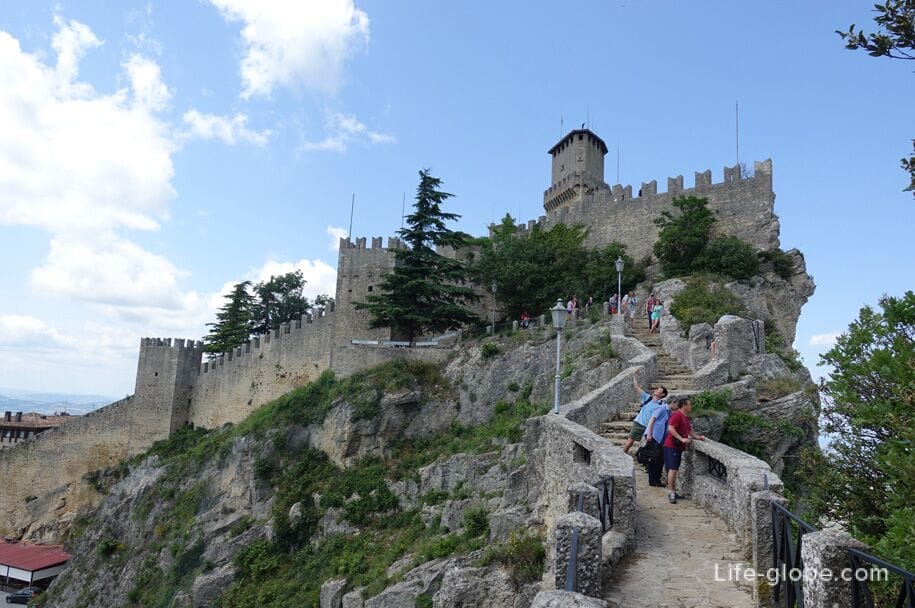

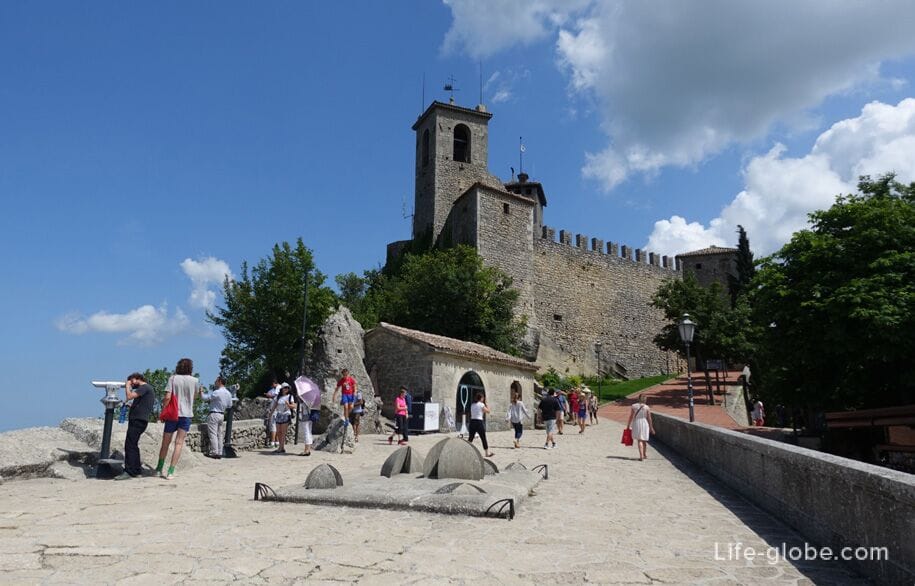
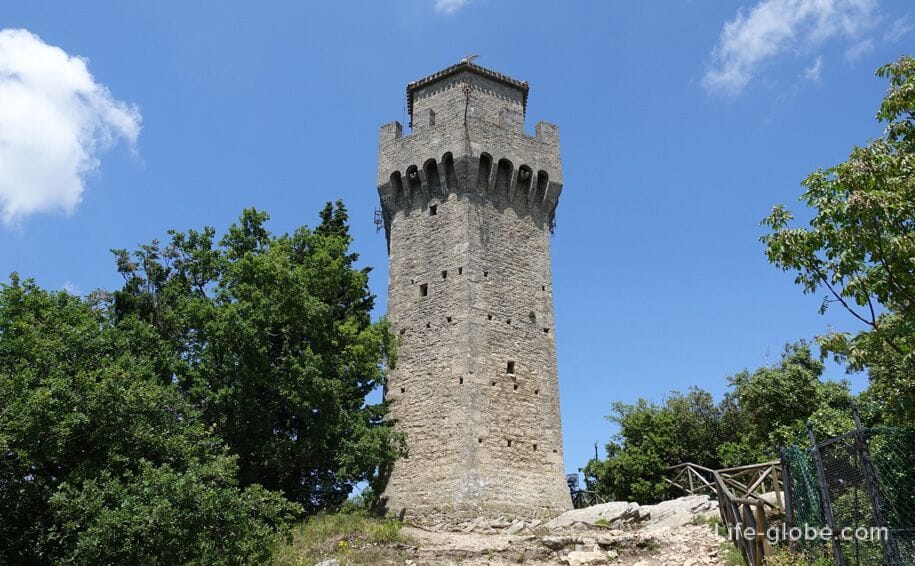
Basilica of San Marino (Basilica di San Marino)
Basilica of San Marino or Basilica of San Marino (Basilica di San Marino, Basilica del Santo) is the main church of the city of San Marino, dedicated to the patron saint of the city and the state - the founder of the republic, Deacon Saint Marino.
The basilica is located on the square of the 16th century Domus Plebis (Piazzale Domus Plebis).
The current church of San Marino was founded in 1826 by the Bologna architect Antonio Serra on the site of an earlier parish of Pieve, dated 4-7 centuries.
The basilica is made in neoclassical style, with a wide porch decorated with eight Corinthian columns; and stands out with a massive Romanesque bell tower, which was rebuilt in the 1600s.
To the right of the Church of San Marino is the small 16th-century church of San Pietro or St. Peter (chiesetta di San Pietro), rebuilt around 1826. The church can be accessed through the sacristy using a staircase carved into the bell tower of the main basilica.
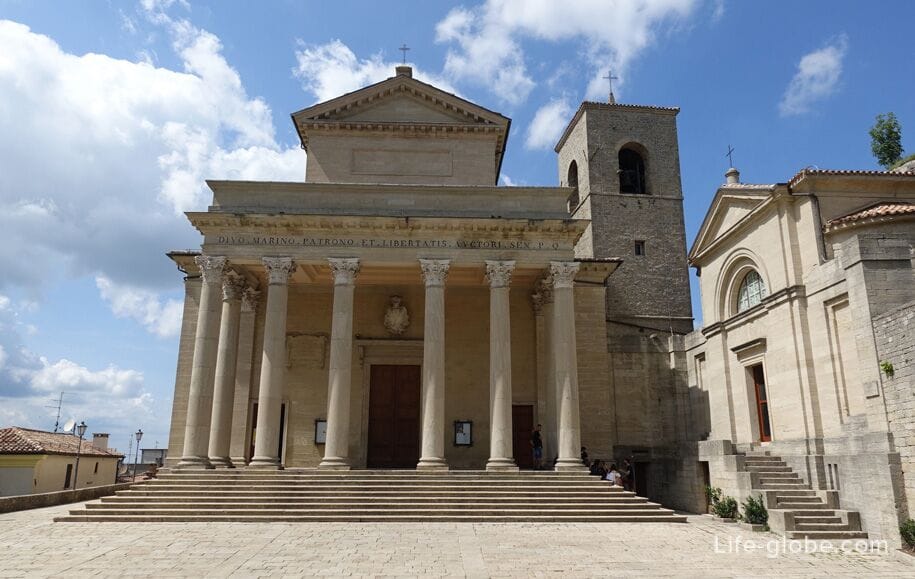
The interior of the Basilica of San Marino has three naves formed by Corinthian columns leading to a semicircular apse, there are also seven altars.
Entrance to the basilica is free. More about the Basilica of San Marino...
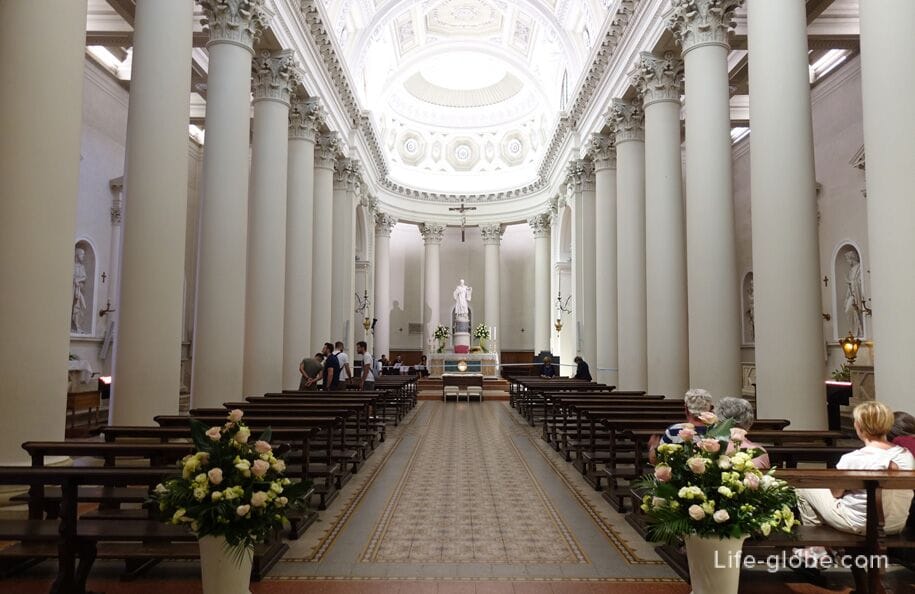
Freedom Square (Piazza della Liberta)
Freedom Square (Piazza della Liberta) is the main square of the city of San Marino.
On the square there are:
- Palazzo Publico or Public Palace, also known as the People's Palace (Palazzo Pubblico) - the town hall of San Marino, as well as the official government building.
The palace building is perhaps one of the most refined and attractive in San Marino.
The building, where official state ceremonies are held, also houses the main institutional and administrative bodies of the republic: the Captain-Regent, the Grand and General Councils, the Council of the XII and the State Congress.
Inside, the walls of the Public Palace are covered with trophies, inscriptions, coats of arms, friezes, busts of famous people, including those from San Marino (among which Carducci stands out).
The treasure that the walls of the palace have guarded for centuries is the Council Hall, located on the top floor. On the wall at the back of the room is an image of the holy founder of the republic, surrounded by his devoted people.
The palace can be visited for a fee;
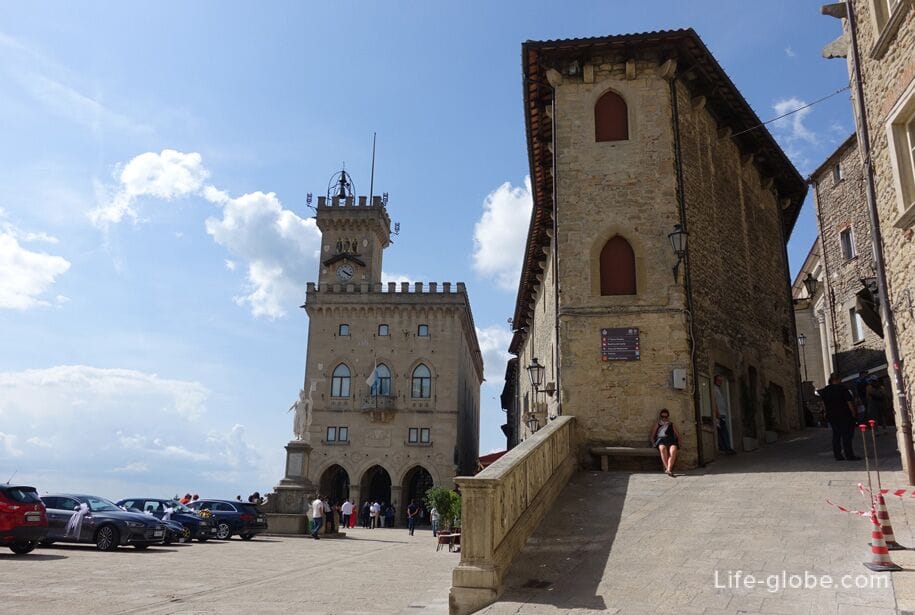

- The Statue of Liberty (della Liberta / Statua della Liberta), which is the decoration of the entire Freedom Square.
The statue is placed on a high pedestal, made in the neoclassical style of white Carrara marble. The work of sculptor Stefano Galletti, which was donated by Countess Otilia Heirot Wagener from Berlin to the Republic in 1876.
The statue symbolizes freedom. Freedom is represented as a warrior advancing only forward with one arm outstretched, while in the other the warrior holds a flag. On the head of the statue is a crown with three towers representing the fortified city of San Marino, the symbolic meaning of which is the restoration of freedom. Learn more about Freedom Square...
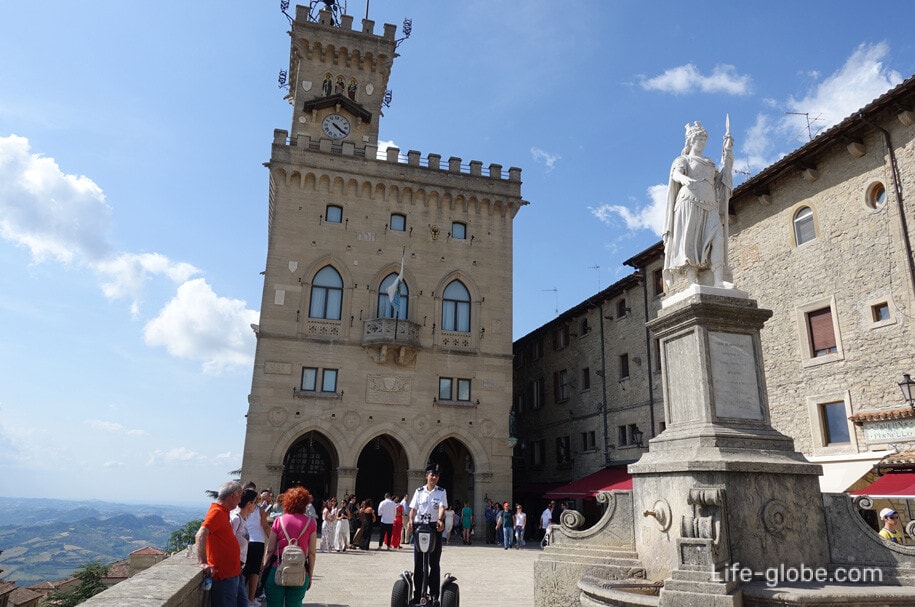
Titano Theatre (Teatro Titano)
The Teatro Titano is the most important theater in the Republic of San Marino, which was built in 1750 and renovated by the Fascist Party of San Marino, most of the money came from fascist Italy.
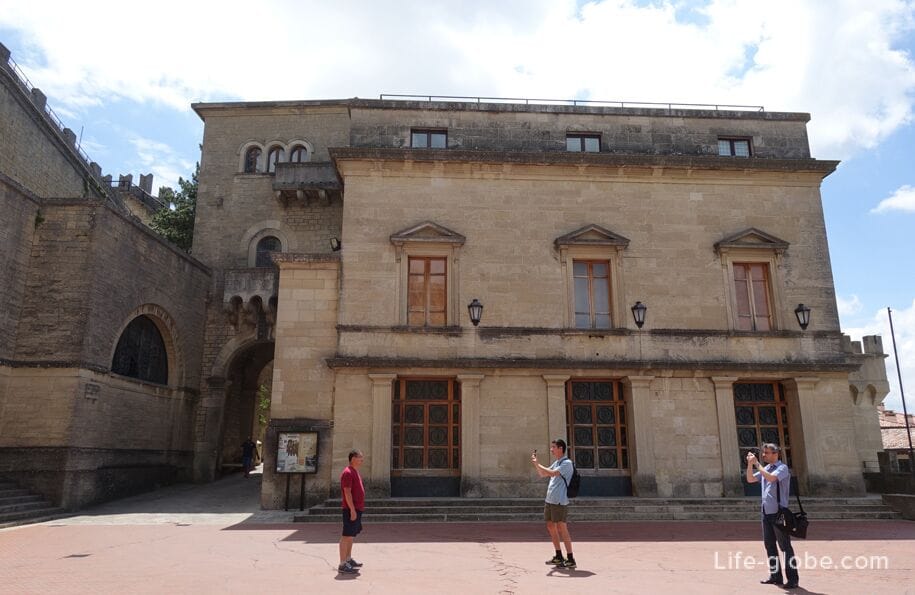
The Titano Theater is located on Piazza Sant'Agata, which also houses the monumental monument of Girolamo Gozi (Monumento a Girolamo Gozi).
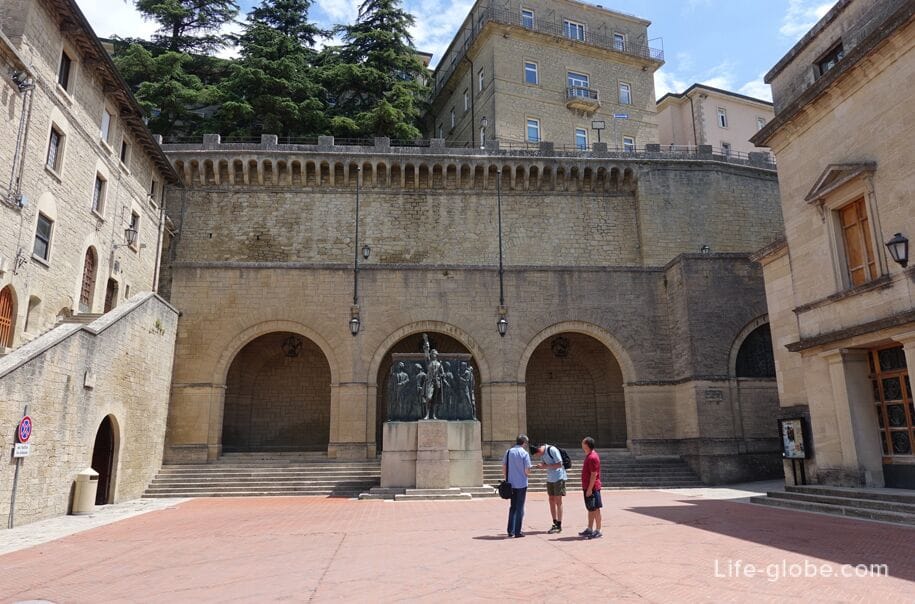
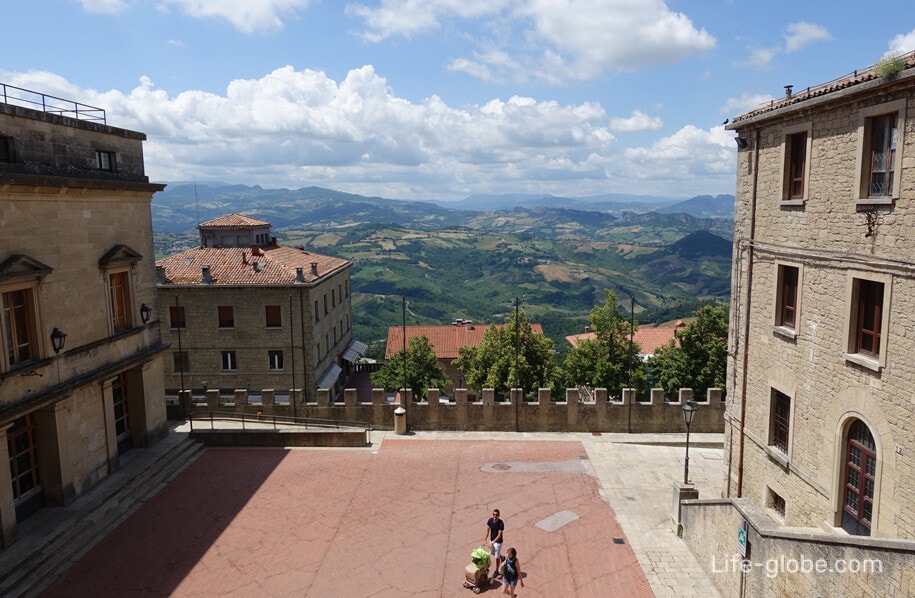
The Church of St. Francis and the Museum of the same name
The Church of San Francesco (Chiesa di San Francesco) was founded in 1361 and the building of the Friars Minor monastery adjoins it.
It is the oldest sanctuary in the republic, repeatedly restored during the seventeenth and eighteenth centuries in accordance with the neoclassical style.
The facade and portico of the church were recently restored to their original form by architect Gino Zani.
The monastery, which was the residence of the Sammarinese Studio, was originally located in the Murat area: it was Pope Clement VII who allowed it to be moved to a safer place due to the constant raids of the Malatesta family.
On March 15, 1966, the San Marino Museum and Pinacoteca (Museo Pinacoteca San Francesco) were opened in two loggias of the monastery, which still work today.
The museum has two sections: sacred art and an art gallery, including a portrait of San Francesco Guercino and works by other authors of the fifteenth and sixteenth century. Here are paintings on canvas and wood, furniture and interior items from numerous Franciscan churches that tell about the presence of religion in the Ancient Republic and the fundamental role they played in its history. The collection is complemented by sculptural and pictorial works of the 20th century artist Emilio Ambron.
Entrance to the museum is paid.
The museum is located at via Basilicius, 33.
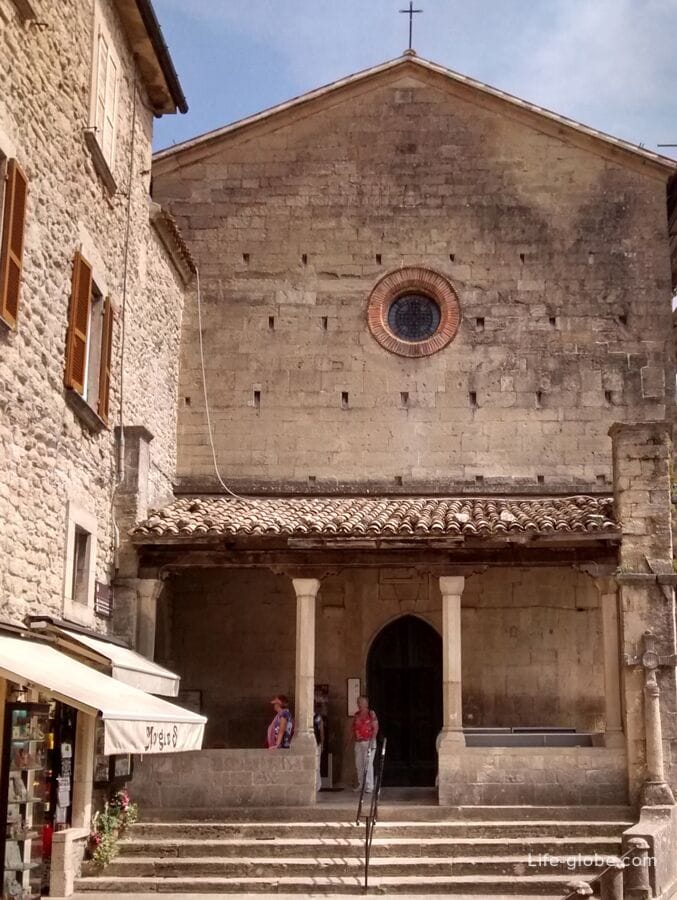
Quarry of Crossbowmen (Cava Dei Balestrieri)
The so-called Quarry of Crossbowmen, which is sometimes referred to as the Ditch of Crossbowmen (Cava Dei Balestrieri) was founded in the 19th century and the stone needed for the reconstruction of the State Palace was mined there.
On February 13, 1966, the Federation of Crossbowmen was established in San Marino, for which a place was created in the former quarry for crossbow shooting competitions, which was a traditional weapon in the republic, used for many centuries.

San Marino - Borgo Maggiore Cable Car
The city has a cable car (Funivia di San Marino), which connects its historical center with Borgo Maggiore, located on the slope of Mount Titano and also included in the World Heritage List.
The length of the cable car is only 338 meters, and the travel time is about 2 minutes.
In Borgio Maggiore are notable: several churches, a bell tower built in 1896 by the architect Francesco Azzurri and the Domenico Maria Belzoppi house.
The cable car is paid. The one-way fare is 2.80 euros, round-trip fare is 4.50 euros.
The address of the upper station of the cable car: Contrada del Collegio, 48. Learn more about the cable car with photos and website...



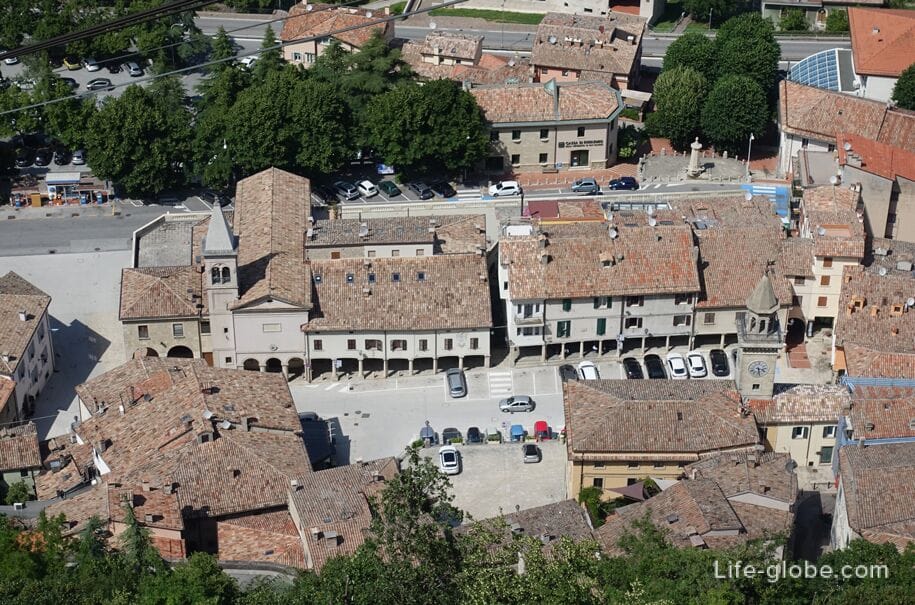
Near the upper station of the cable car in the city of San Marino there is a small square with the monument of Bartolomeo Borghesi (Monumento a Bartolomeo Borghesi) and a street, which are among the most visited viewing platforms of San Marino.








Monastery of St. Clare (Antico Monastero di Santa Chiara)
The ancient Monastery of St. Chiara or Clara / Clarissa (Antico Monastero di Santa Chiara) is a historical complex located at Contrada Omerelli, 20-22.
The formation of the convent was started in 1565.
In the late 1960s, the monastery required complex and expensive restoration work. The monastery building was bought by the state, and the sisters, in the 1970s, moved to a new monastery located in Valdragon at the foot of Mount Titano. This (new) monastery is still functioning.
The building of the former monastery of Santa Chiara in the center of San Marino was restored (work began in 1980) and now the entire "old" monastery complex is the residence of cultural institutions. The University of San Marino is located in part of the monastery, the Museum of emigrants is located in several halls, and the ancient garden of the monastery, where the nuns once rested (Antichi Orti del Monastero S.Chiara) is also open to the public.
Entrance to the courtyard of the monastery is free (free). More about the monastery and the museum...
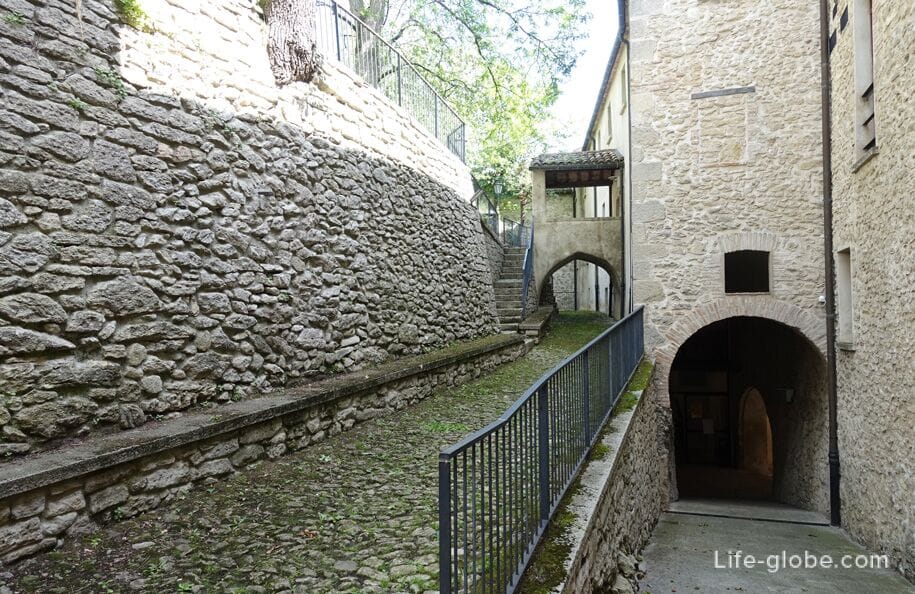
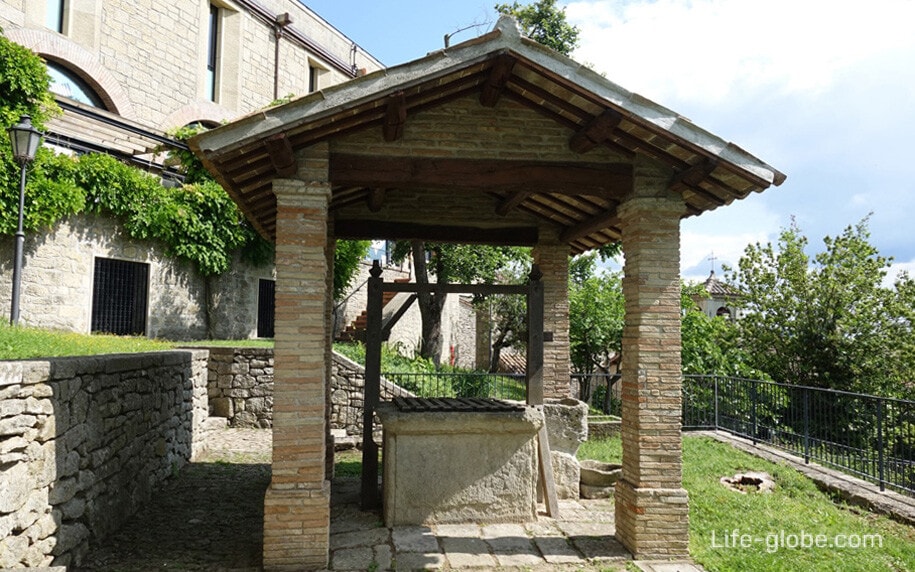
Church of St. Quirino
The Church of San Quirino or Saint Quirino (Chiesa di San Quirino) and the monastery of the Capuchin Fathers (Convento dei Frati Cappuccino) are located in a small square on Paolo III Street.
The Franciscan Capuchin Church of Saint Quirin and the monastery were erected in 1549 on the remains of an ancient chapel dedicated to Saint Quirin.
Access to the church is via a wide stone staircase leading to a portico with five brick arches supported by monolithic columns.
On the square, near the entrance to the church, there is a column-monument to St. Francis (1928), the work of Eduard Collamarini. Statue of Silvetrio Monteguti.
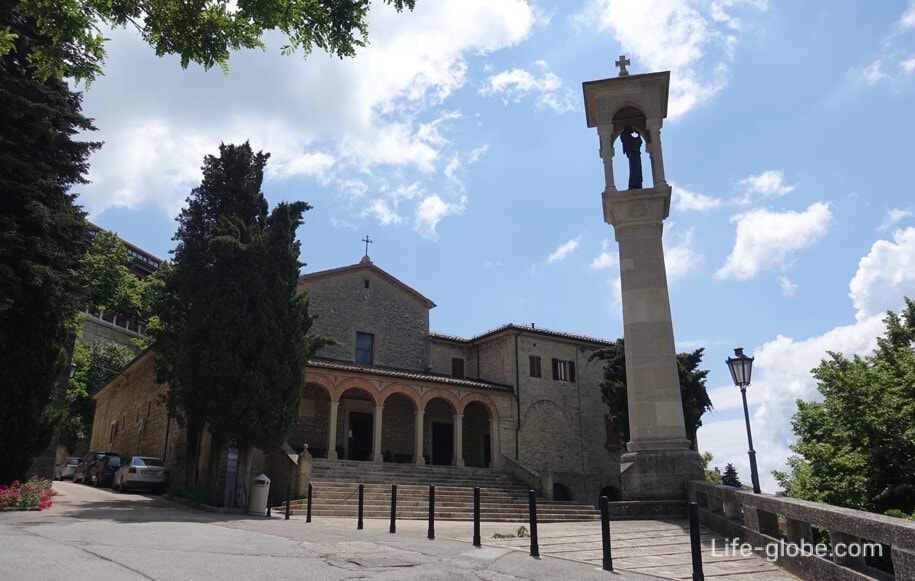
The interior of the church is modestly and strictly executed.
The walnut altar is an excellent example of a Capuchin altar dating from the 16th and 17th centuries, whose main artist was the monk Liberato de Macerata.
From the rear entrance of the church you can get into a small monastery with a stone well and a rainwater tank.
Entrance to the basilica is free (free). More about the Church of St. Quirino...
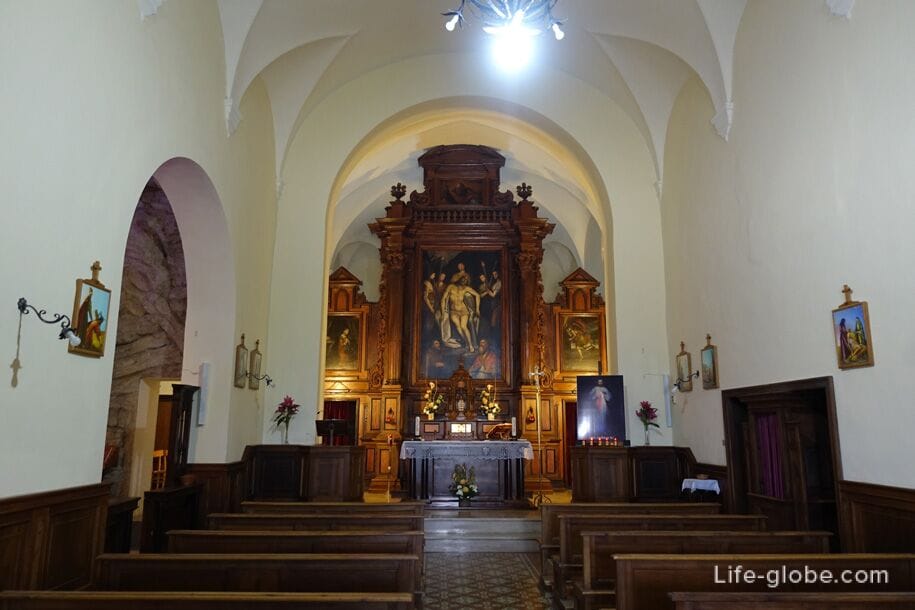
The State Museum (Museo di Stato)
The State Museum of San Marino (Museo di Stato) was opened in 1899 and today is housed in the historic Palazzo Pergami Belluzzi building.
In the halls of the museum there are almost 5,000 exhibits, including works of art, artifacts, paintings and objects, many of which originate from San Marino and are associated with its history.
The museum houses archaeological finds from the Neolithic to the early Middle Ages (the votive bronze "Tanaccia" and the golden rod "Tesoro di Domagnano" are famous), paintings and sculptures by Guercino, paintings of the seventeenth century and ancient coins of San Marino, as well as finds from Ancient Egypt, Etruscans and Romans.
Entrance to the museum is paid.
Museum address: Piazzetta del Titano, 1.
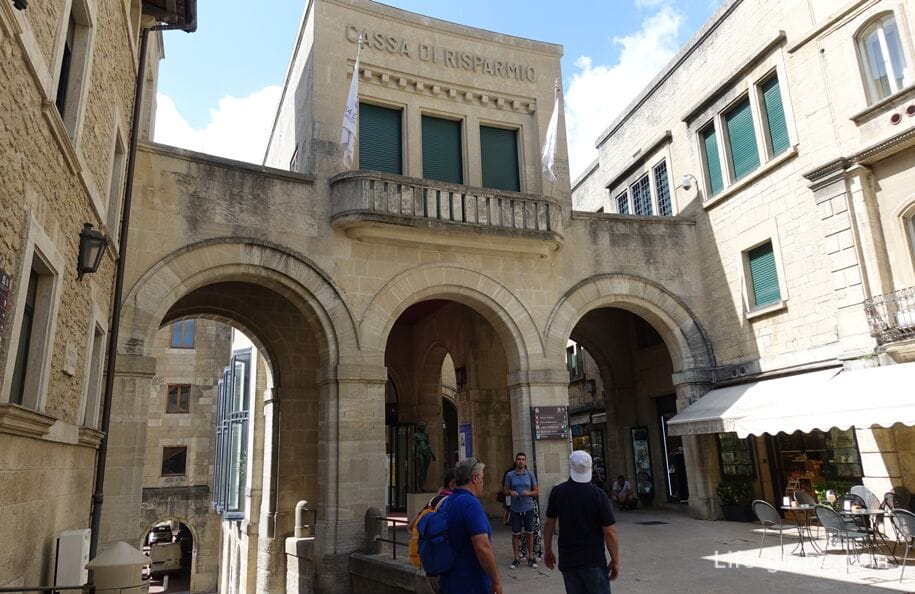
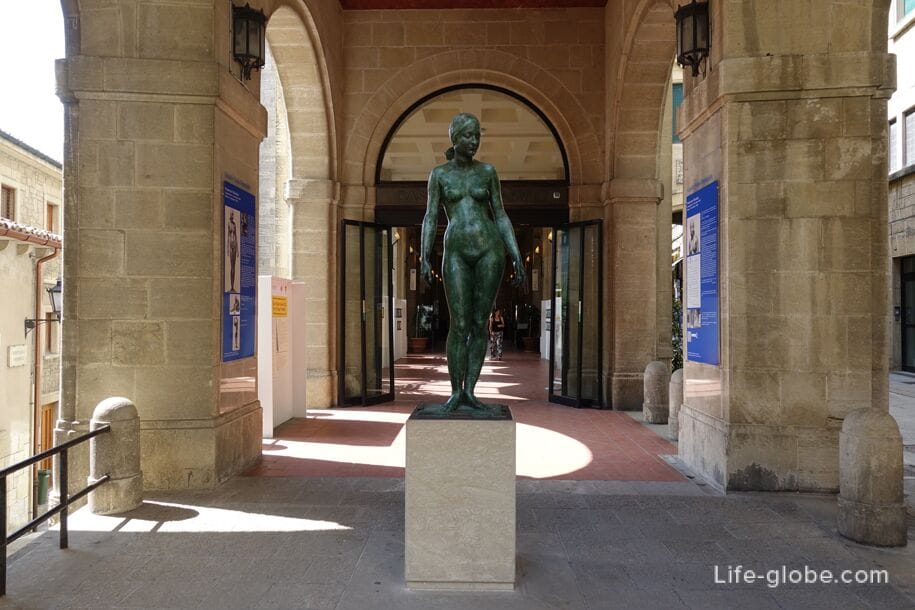
Other San Marino museums
In addition to those listed, there are also other museums in San Marino. There are 12 public and several private museums in total, whose repertoire ranges from ancient weapons of the eighteenth century to wax statues, curiosities and instruments of torture.
Other museums in the city: a gallery of modern art (Galleria d'arte Moderna e Contemporanea), which holds 800 is quite modern works (the first decades of the 20th century), including not only painting, but photography and sculpture; a Museum of curiosities (Salita alla Rocca, 26), wax Museum (Via Lapicidi Marini, 17), the Museum of modern weapons (Contrada della Pieve, 2), Museum of torture (side gate of San Francesco), the Maranello Rosso collection (Strada dei Censiti, 21 - Falciano), Museum of peasant civilization and traditions of the Republic of San Marino (Strada di Montecchio, 11).
In the state museums of San Marino, you can buy tickets to any one museum, as well as complex tickets valid in two or more museums. The two towers of San Marino that can be visited also belong to state museums.
Website: museidistato.
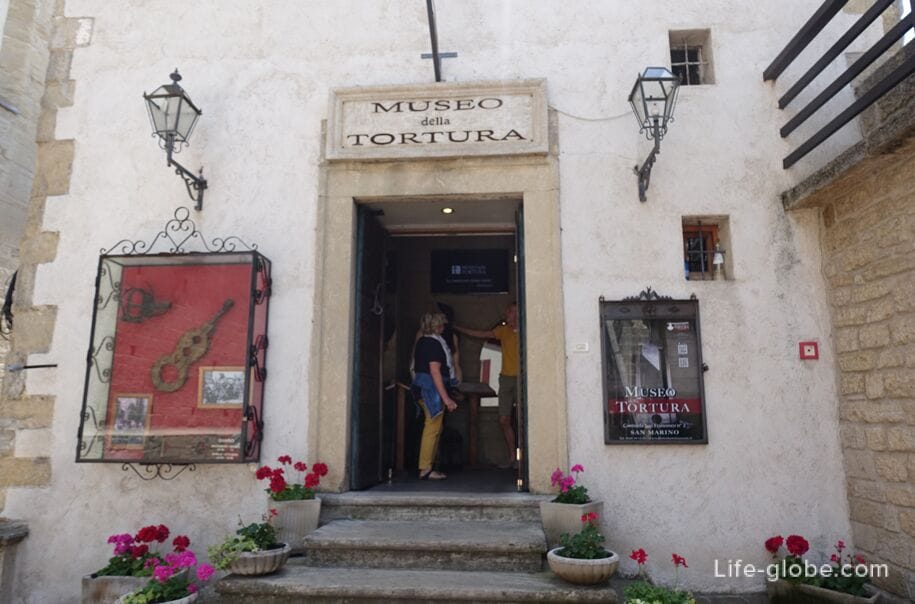
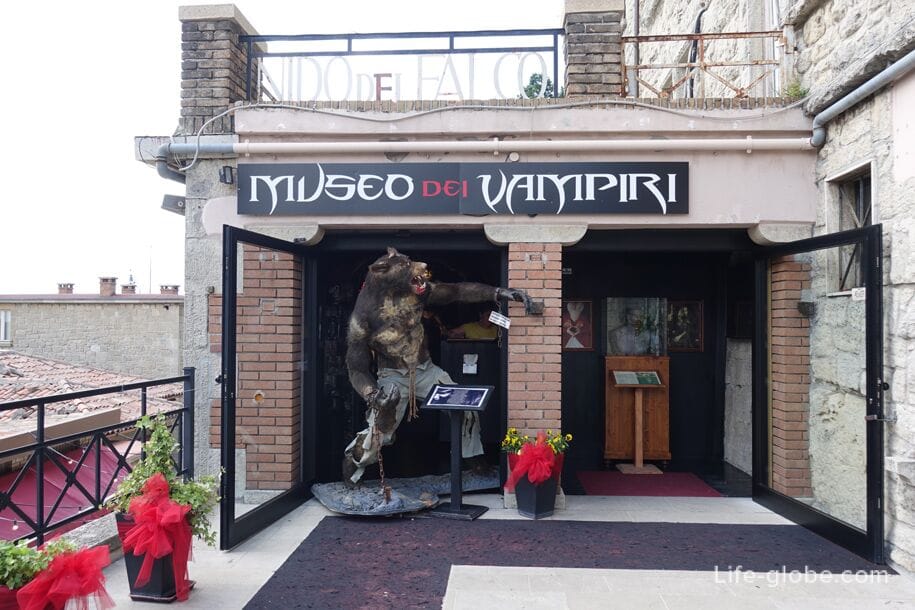
Tourist train in San Marino
A tourist train runs through San Marino, which connects the city with Borgo Maggiore.
The train tour lasts 40 minutes. There is an audio guide in 11 languages.
More information about the train, route, stops, audio guide and the cost of the tour can be found on the official website: bytrainsanmarino.
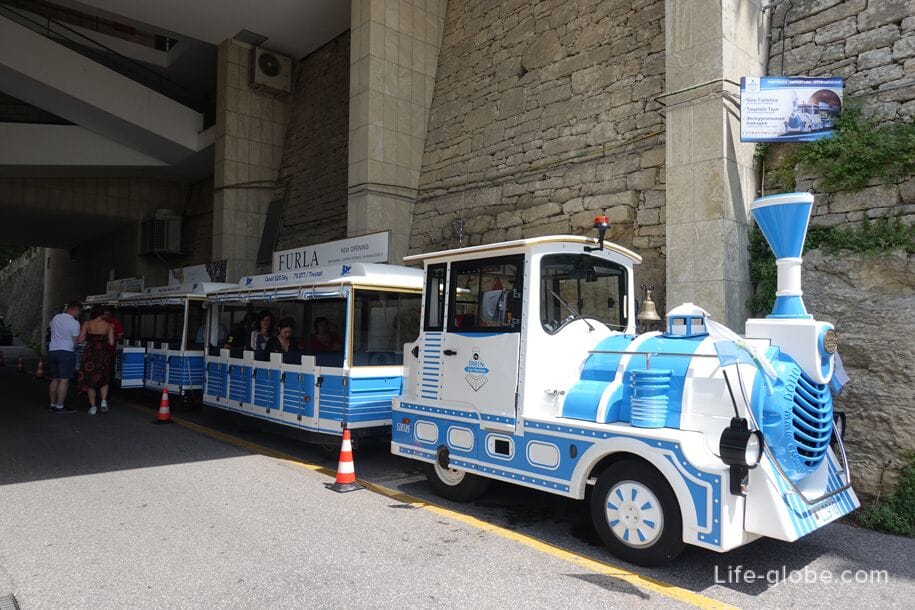
Excursions to San Marino
City map of San Marino
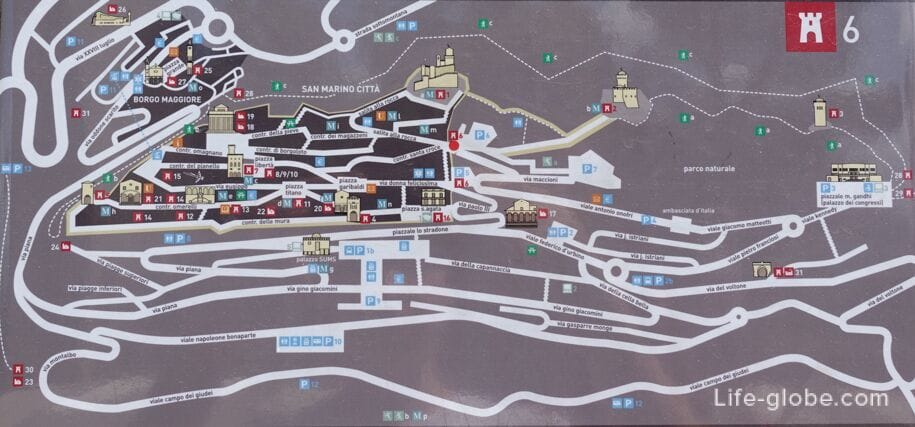


How to get to San Marino
There is no airport in the Republic of San Marino. The nearest international airport is located in the Italian city of Rimini. Flights to Italy →
Public buses run from the center of Rimini to the republic and the city of San Marino.
You can also get there by taxi, car or visit San Marino with a guided tour.
Rent a car in Rimini (all places) →
Excursions from Rimini to San Marino
Learn more about how to get to San Marino from Rimini...
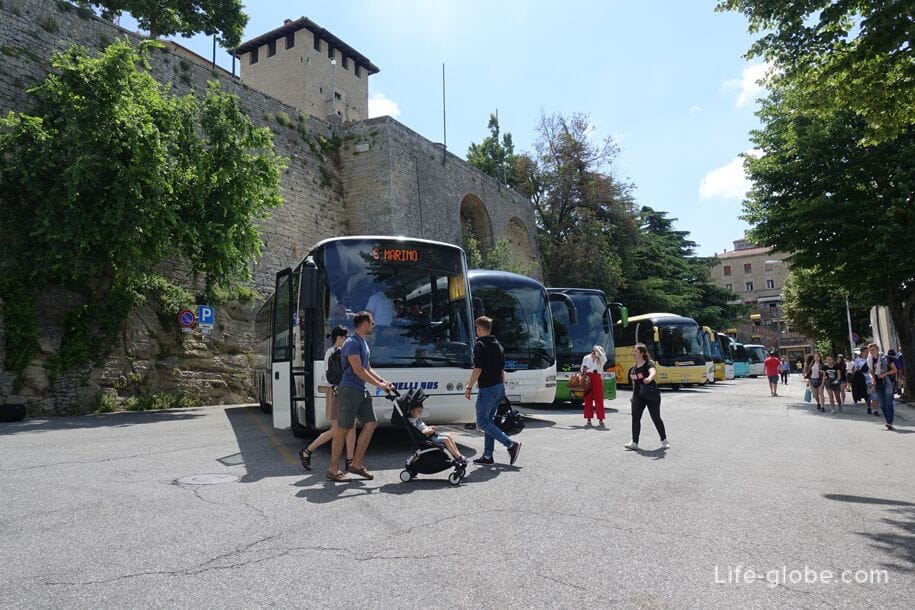
Where to stay in San Marino
For those who want to stay in San Marino and get to know the city and the republic as a whole, as well as admire the panoramic views, there are hotels in San Marino.
The 4-star Grand Hotel San Marino features a hot tub, a panoramic terrace with sun loungers, a wellness center, free Wi-Fi, a cocktail bar and a restaurant serving international and regional cuisine.
All rooms at the hotel have a king-size bed.
A buffet breakfast with homemade cakes is served for guests. Link to the hotel

4-star Hotel Cesare (Hotel Cesare) with a terrace, landscaped garden and a restaurant specializing in homemade pasta dishes, as well as grilled meat and fish dishes.
The rooms are decorated in bright colors, parquet floors. Each room has: Wi-Fi, air conditioning and TV with international SKY channels.
A buffet breakfast is included in the room rate. Link to the hotel

4-star Hotel Titano with panoramic restaurant, bar, private parking, wellness center with sauna, fitness center and Turkish bath.
Each room at the hotel has central heating and individually controlled air conditioning, as well as free Wi-Fi and a flat-screen TV. Soft bathrobes and slippers are provided.
Breakfast is included in the price of some rooms. Link to the hotel
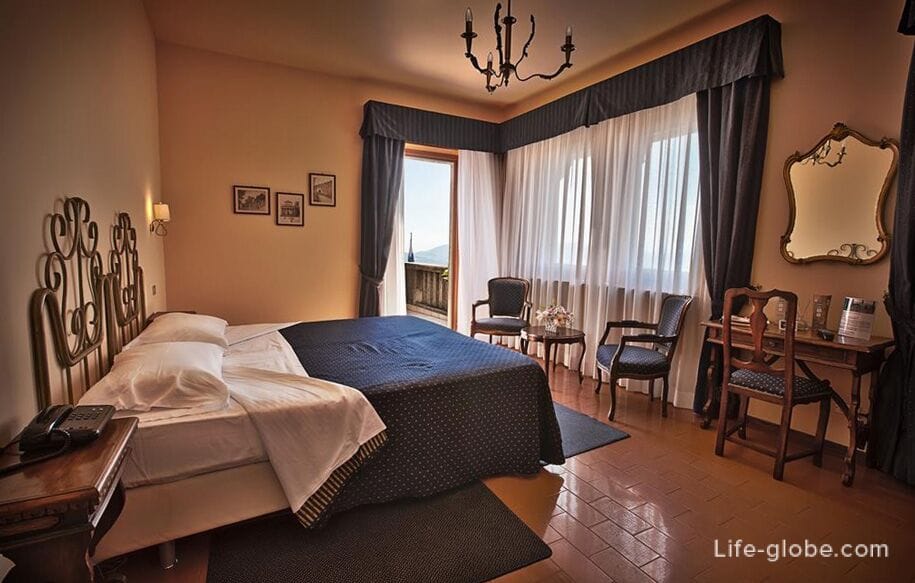
The 3-star Rosa Hotel offers rooms with free Wi-Fi, satellite TV and air conditioning.
The hotel has a bar.
Parking is provided for guests, and covered parking is provided for motorcycles.
Breakfast is included in the room rate. Link to the hotel
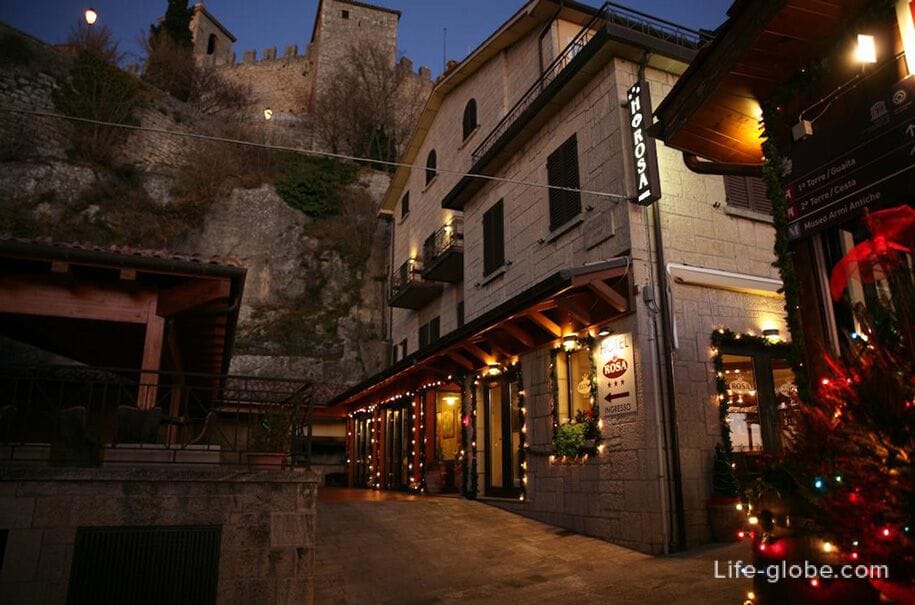
All accommodation facilities in San Marino, including in the historical center and more remotely from it, can be viewed and booked here
Currency and visas
You are entering San Marino via Italy, no additional documents are required. There are no borders and checks between countries.
The currency of San Marino is Euro (€). Both cash and bank cards are accepted for payment in many shops, cafes and restaurants.
Italy is part of the Schengen area. To visit the country, you may need travel insurance.
Photos of the city of San Marino
